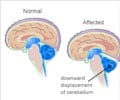In a path-breaking researcher, scientists have identified subtle defects in the brain of people suffering from autism spectrum disorder (ASD). They believe that this could help in precise diagnoses and improve treatment of ASD.
Scientists at the Baylor College of Medicine, Houston, discovered characteristic patterns of brain activity in people with ASD that reflect an inability to perceive themselves as social creatures.For the study, P. Read Montague and colleagues asked groups of high-functioning people with ASD and normal people to play a “social trust” game as their brains were scanned using functional magnetic resonance imaging. In this widely used imaging technique, harmless magnetic fields and radio waves are used to plot brain flow in brain regions, which reflects brain activity.
In the game, an “investor” decides how much of a fund of money to send to a “trustee.” The amount is tripled on the way to the trustee, and the trustee then decides what fraction to repay to the investor. The interaction is repeated ten times in each session.
The researchers found that, while people with ASD played the game the same as normal controls, the pattern of activity in their cingulate cortex indicated a diminished perception of themselves in a social interaction. The abnormality arose at the so-called “self” point in the game, where they were deciding how much to invest, and their brains were thus representing the social intent of their own behaviours.
The activity pattern seen in people with ASD during the game resembled the pattern seen in normal people when they played against a computer, in the absence of a social partner, noted the researchers.
The researchers concluded that their ability to quantify brain activity in people with ASD “may serve as a diagnostic tool, identify subtypes of autism, or be used to seek covariates in genetic databases.”
Advertisement
The team further suggested that the measurements they developed could be used in therapy to increase the ability of people with ASD to represent themselves in social interactions.
Advertisement
Source-ANI
KAV/L











